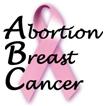CoverUp
The Cover-Up: Critics Blow Smoke to Confuse the Public
What commentators say about the cover-up
Whenever the abortion-breast cancer research receives a little press, the abortion industry and their supporters put their media machines into gear and invariably create a smokescreen to confuse the public and persuade women that abortion is, in fact, safe. Some members of the press willingly cooperate in this deception. Others do so unwittingly.
These detractors typically offer the following arguments to reassure women of abortion's safety and to explain why more than four decades of research is not deserving of recognition: 1) They maintain that retrospective studies (interview based studies) are flawed because of an hypothetical phenomenon called "recall bias" or "reporting bias;" and 2) They assert that the 1997 Melbye study, also known as the Danish study, was a large prospective study (one relying on medical records, rather than interviews to collect data) which allegedly put to rest any chance of an association between abortion and breast cancer. Its researchers found no overall increased risk of breast cancer. 1 It is irresponsible, however, to assert that a single, seriously flawed study can be definitive, particularly when more than two dozen studies demonstrating increased risk demand a different conclusion and 16 of them are statistically significant.
Their arguments are disingenuous, at best. Each one has been effectively shot down. Recall bias is a theory which says that abortion is a stigmatized surgical procedure; and, for this reason, healthy women underreport their abortions, but women with breast cancer are more forthcoming. Critics say that this factor causes an artificial increase in breast cancer risk to appear among patients who have had abortions. The truth is that several teams of scientists have tested for recall bias, but no one has ever found any credible evidence that it exists. In spite of this, the abortion industry has found this argument to be quite useful in muzzling the debate.
The Melbye study is a severely criticized study discredited by both the Brind team and Senghas and Dolan. 2 Significantly, even Melbye reported within the body of the study that: "[w]ith each one-week increase in the gestational age of the fetus . . . there was a 3 percent increase in the risk of breast cancer." Senghas and Dolan criticized Melbye for including this statement under the "Results" section of the study, instead of under the "Conclusions" section. 3
Ironically, Melbye's publisher, the New England Journal of Medicine, quietly slipped an article into its publication in February of 2000 in which abortion was identified as a possible "risk factor." 4 Nevertheless, the abortion industry, the National Cancer Institute, the World Health Organization and the American Cancer Society all find that it's suitable for their purposes to continue pointing to Melbye's conclusions denying a link between abortion and breast cancer.
It is remarkable that critics offer Melbye as final "proof" that abortion does not cause breast cancer, considering the facts that scientists already acknowledge to be true. For example, it is known that estrogen is a secondary carcinogen which promotes the growth of both normal and abnormal breast tissue during pregnancy. In fact, estrogen replacement therapy (ERT) was added to the nation's list of known carcinogens in 2001. ERT is largely the same chemical form of estrogen to which women are exposed during pregnancy.
Secondly, a majority of the risk factors for breast cancer involve an overexposure to estrogen. Third, estradiol levels (estrogen) increase 2,000 percent by the end of the first trimester. This estrogen overexposure is not terminated until the third trimester when another process called differentiation takes place. Fourth, an experimental rat study proved that post-abortive rats could be reliably induced to develop breast tumors when exposed to a carcinogen at a much greater rate than virgin and parous (those having offspring) rats. 5 This animal study demonstrated a protective effect from a FIRST FULL TERM PREGNANCY (FFTP), and its data suggested that abortions increase risk. Fifth, scientists acknowledge that postponement of FFTP increases a woman's lifetime risk of breast cancer.
Critics of the research demonstrating increased risk prefer to ignore the only statistically signifWhat commentators say about the cover-up.icant prospective study to date: the 1989 Howe study published in the International Journal of Epidemiology. Howe found an increased risk of 90% among New York women who had procured abortions. 6 A prospective study precludes the possibility of recall bias because it relies on medical records, instead of interviews, to obtain data.
Two additional tactics are employed by detractors to further cloud the issue. The first one has to do with the accusation that all breast cancer patients are stigmatized when a controversial risk factor, like induced abortion, is associated with the disease. The truth is that most women who have had breast cancer have NOT had abortions.
It can also be said that not all women who have had abortions will ultimately develop breast cancer. However, because induced abortion is largely a choice that women make, it is a PREVENTABLE risk factor for this disease. Abortion-bound women have the right to make informed choices, just as much as tobacco smokers have the right to be warned that tobacco use is a risk factor for lung cancer. Furthermore, women who have procured abortions have the right to know that they need to take steps for early detection of possible tumors. Sadly, the abortion industry and its supporters have a long history of censoring the research while, at the same time, asserting that women are autonomous decision makers.
The next tactic used by detractors is called "shoot the messenger." Instead of discussing the scientific evidence, detractors resort to labeling their opponents and disparagingly call them "religious conservatives" or "pro-life," overlooking the fact that the first two studies linking abortion with breast cancer were completed in 1957 and 1968 -- before the 1973 Roe v. Wade decision legalized abortion in the United States and long before anyone had ever heard the term, "pro-life group." 7 8 They also overlook the fact that most of the studies were completed by abortion supporters, Dr. Janet Daling being the most notable example. 9
Detractors attempt to marginalize their opponents by attaching a negative label to them in order to uproot the scientific research from the public mind. Unfortunately, these same critics, many of whom are quick to proclaim how much they care about women's health, do not recognize that the abortion-breast cancer research is a women's health issue, not an abortion issue. It is deplorable that these same individuals are singularly indifferent about examining a far more meaningful question: Has the existence of the studies demonstrating an association between abortion and breast cancer been covered-up for 44 years because of abortion politics and greed?
More Information on the Cover-Up:
U.S. House Debates Abortion-Breast Cancer Link
Center for Reproductive Law & Policy
ABC Quarterly Update (Fall, 1999)
- 1. Melbye et al. (1997) New Engl J Med 336:81-5.
- 2. (1997) New England Journal of Medicine 336:1834.
- 3. Ibid, p. 83.
- 4. Armstrong (2000) NEJM 342:564-71.
- 5. Russo J et al. (1980) Am J Pathol 100:497-512.
- 6. Howe et al. (1989) Int J Epidemiol 18:300-4.
- 7. Segi et al. (1957) GANN 48 (Suppl.):1-63; and Watanabe & Hirayama
- 8. (1968) Nippon Rinsho 26:1853-9 (in Japanese).
- 9. Daling et al. (1994) J Natl Cancer Inst 86:1584-92

